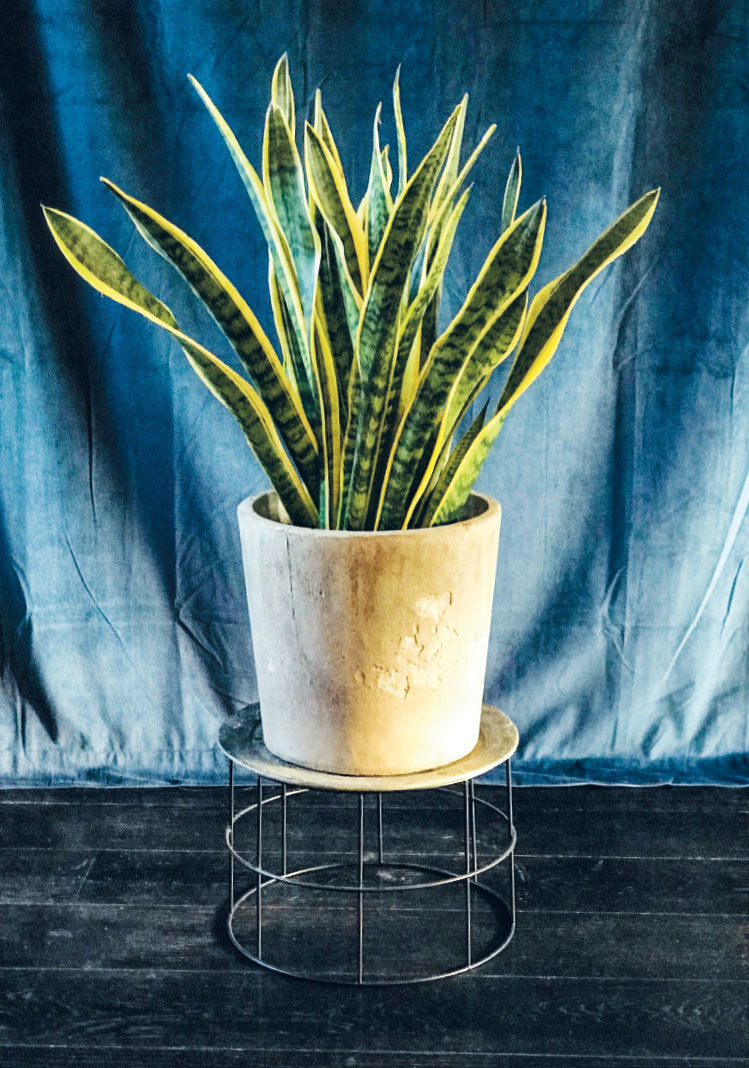 LIGHT
LIGHTMother-in-law’s tongue Sansevieria trifasciata
This is a very robust succulent that can tolerate most things, including drying out and dry indoor winter air. It is also known as the bayonet plant due to its distinctive, sharp, thick leaves. Mother-in-law’s tongue has a reputation as one of the best air-purifying plants there is, which makes it perfect for asthma- and allergy-sufferers. It magically converts carbon dioxide to oxygen, even at night, and for this reason it’s often found in bedrooms. According to NASA, it would be possible for one person to live in a hermetically sealed bedroom if it contained six to eight mother-in-law’s tongues. This may be true, but I suggest that you do not try this at home.
 LIGHT
LIGHT
In its natural habitat, Mother-in-law’s tongue often grows in direct sunlight and warmth, so prefers bright, direct sunlight in the home. However, it is a highly tolerant plant, and can also cope with lots of shade.
 WATERING
WATERING
Water infrequently – every three weeks in the spring and summer months, and no more than once a month the rest of the year. It prefers drying out and periods of neglect.
 SOIL
SOIL
Use seed, cactus or ordinary potting compost. If using potting compost, mix plenty of leca in with the soil to ensure good drainage. Mother-in-law’s tongue likes a crowded pot, so avoid large pots. Don’t repot until the roots look as if they’re bursting out of the pot, and then to a pot that is only a few centimetres (about 1in) bigger in diameter.
 FEEDING
FEEDING
It requires only a little food – once a month is enough during the warmer months. If it has just been repotted, the nutrients already present in the soil will usually last for a year. Otherwise you can apply slow-release plant food once a year.
 ORIGIN
ORIGIN
It is native to tropical West Africa where it is actually used to make rope because the leaf fibres are so tough.
 MISCELLANEOUS
MISCELLANEOUS
Mother-in-law’s tongue can be propagated by cutting off a leaf and planting it directly in soil. Note that the plant is poisonous – including for our four-legged friends.
